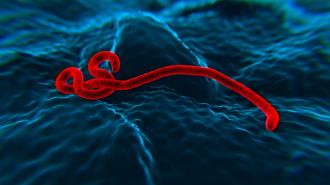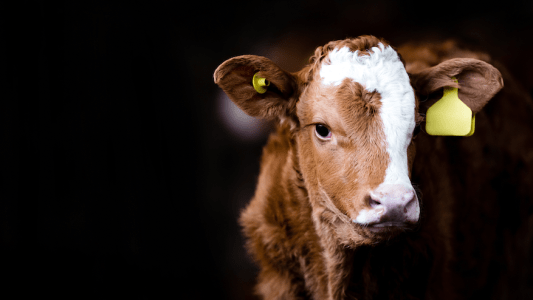Researchers have discovered two human antibodies that neutralize the two most common strains of Ebola.
When combined in a cocktail and given to non-human primates, the monoclonal antibodies provided 100% protection from infection at even the lowest dose. The drug also reversed severe symptoms in those already infected. The researchers note, however, that the tests involved a relatively small number of primates.
While there are currently some antivirals and vaccines against the deadly virus, a broadly reactive treatment — one which can target multiple strains — would be an important public health breakthrough.
“Finding antibodies with this breadth is important because we don’t know which virus in the genus of ebolaviruses is going to break out next,” Erica Ollmann Saphire, president and CEO of the Center for Infectious Disease and Vaccine Research and a member of the research team, told GEN.
The antibodies bind to the Ebola strains which have caused the most infections and deaths, including the 2014 West Africa outbreak that killed over 11,000 people.
A ball of snakes: Despite being known simply as “Ebola,” the viper-shaped virus has several different strains, just like flu and coronaviruses.
There are currently six known species of ebolavirus: Sudan; Reston (the Virginia outbreak of which was the subject of The Hot Zone); the recently discovered Bombali; Taï Forest; Bundibugyo; and the first strain humans encountered, Zaire.
Of all the ebolaviruses, Sudan and Zaire have caused the most outbreaks and deaths; the 2014 West African outbreak, which ravaged multiple nations and killed over 11,000 people, was caused by Zaire ebolavirus.
Build a better antibody: The 2014 epidemic shocked scientists and public officials with its rapid, overwhelming spread. Its horrors have cast a long shadow over outbreak response, and embers from the epidemic still smolder, causing sporadic outbreaks to this day.
But it was also the debut of effective vaccines and antivirals, weapons which have since been used to contain other outbreaks.
While current Ebola treatments can work, they have a flaw: they fall for one of the virus’ tricks.
Current antibody treatments have a flaw: they fall for Ebola’s decoy. The new antibodies do not.
The antibody cocktails we use now not only stick to the virus itself, but also to a protein the virus secretes — think of a military plane dropping flares to draw off heat-seeking missiles.
But the new antibodies the researchers found avoid the protein, glomming onto the viruses directly.
“If 80–90% of what’s there is some kind of smokescreen, having antibodies that can target the vulnerable spot is valuable,” Saphire told GEN.
One-two punch: For their study, published in Cell, the researchers took the blood from two Ebola survivors and isolated two antibodies, named 1C3 and 1C11. Both of the antibodies can bind to the Zaire and Sudan strains of Ebolavirus.
The researchers found 1C3 to be especially surprising.
“This antibody might punch above its weight,” Saphire said. “The antibody is able to block three sites on the virus at the same time using different loops and structures to anchor into each one. That is remarkable.”
The other antibody, 1C11, aims for the mechanism that Ebola uses to break into cells (similar to coronaviruses’ spike protein). Because it is so important to Ebola’s life cycle, the mechanism looks very similar on both the Zaire and Sudan strains, and it is unlikely to dramatically mutate, making it a prime target.
Taken together, the new antibodies provided 100% protection against infection in primates, and reversed severe symptoms of disease.
In addition to providing 100% protection against infection in the non-human primates, the antibody cocktail was also capable of reversing severe symptoms in sick primates.
“The first symptoms of Ebola virus tend to be a fever and a headache, which can look like a lot of different diseases,” Saphire said. “An antibody that can be used later in the course of disease is a lot more useful.”
Because they worked at even the lowest tested doses and avoid sticking to Ebola’s protein decoy, each course of treatment may require smaller doses, making it cheaper to produce and stretching supplies further in an emergency.
We’d love to hear from you! If you have a comment about this article or if you have a tip for a future Freethink story, please email us at [email protected].






